Downloaded 79 times

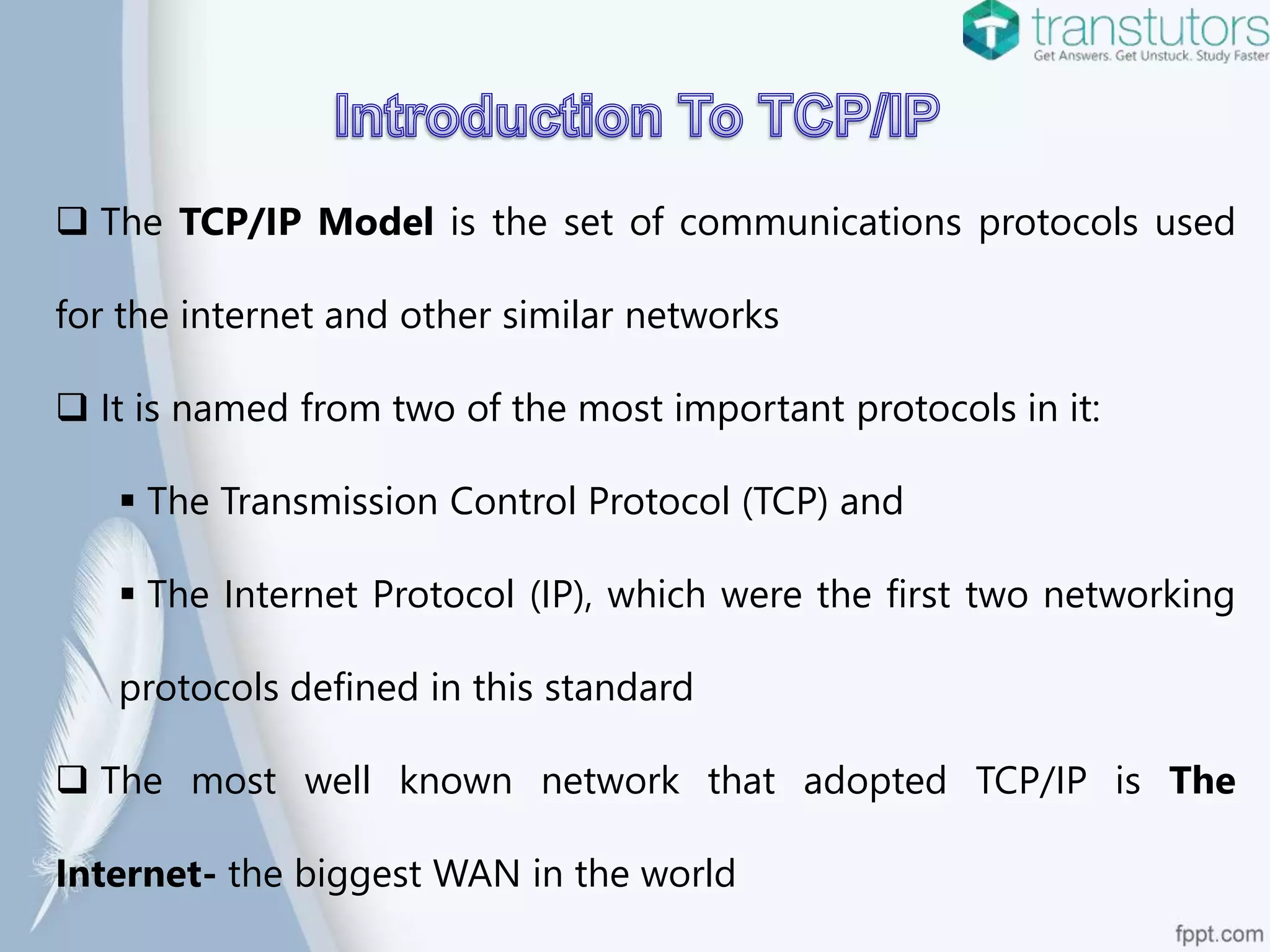
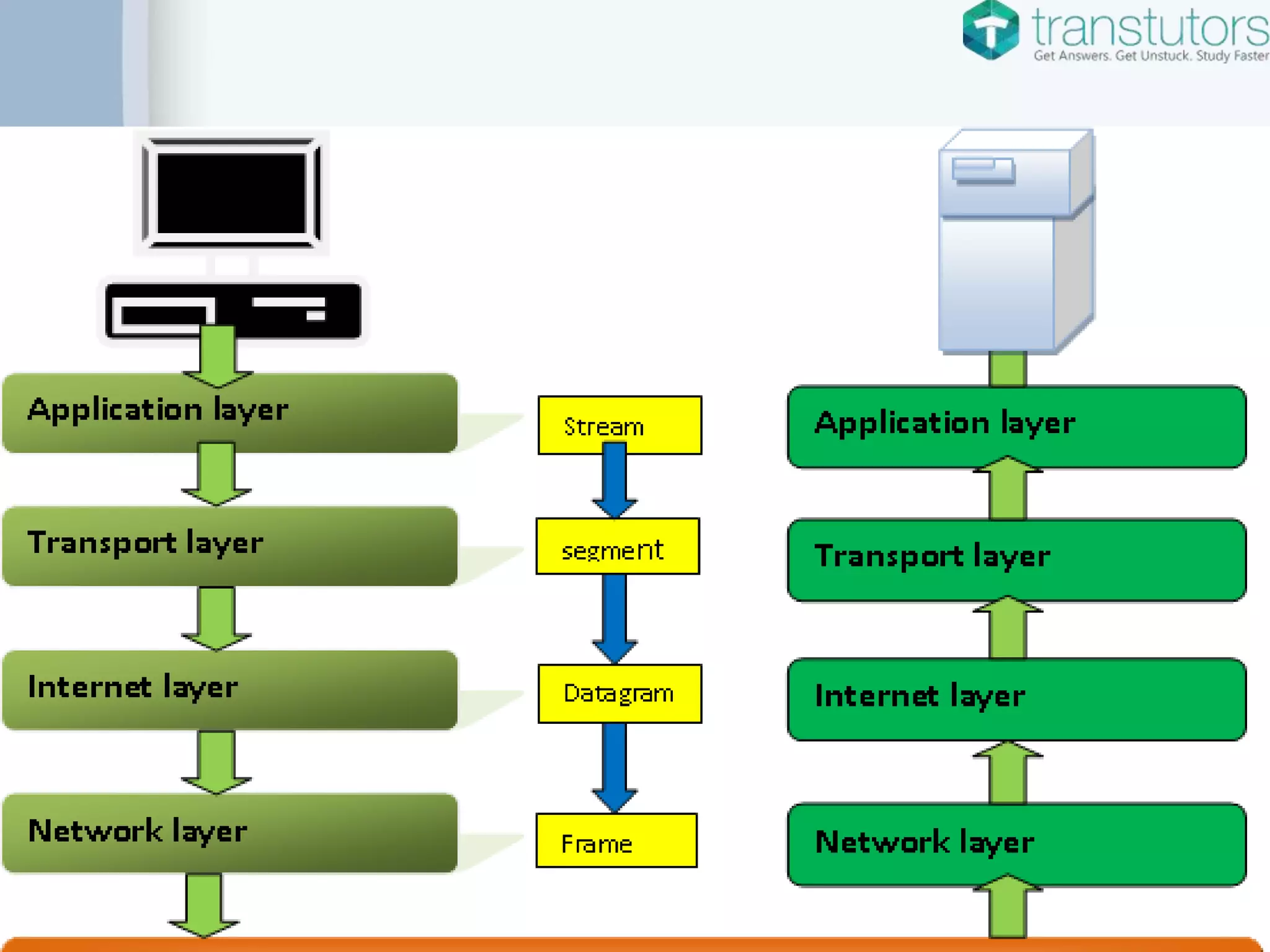

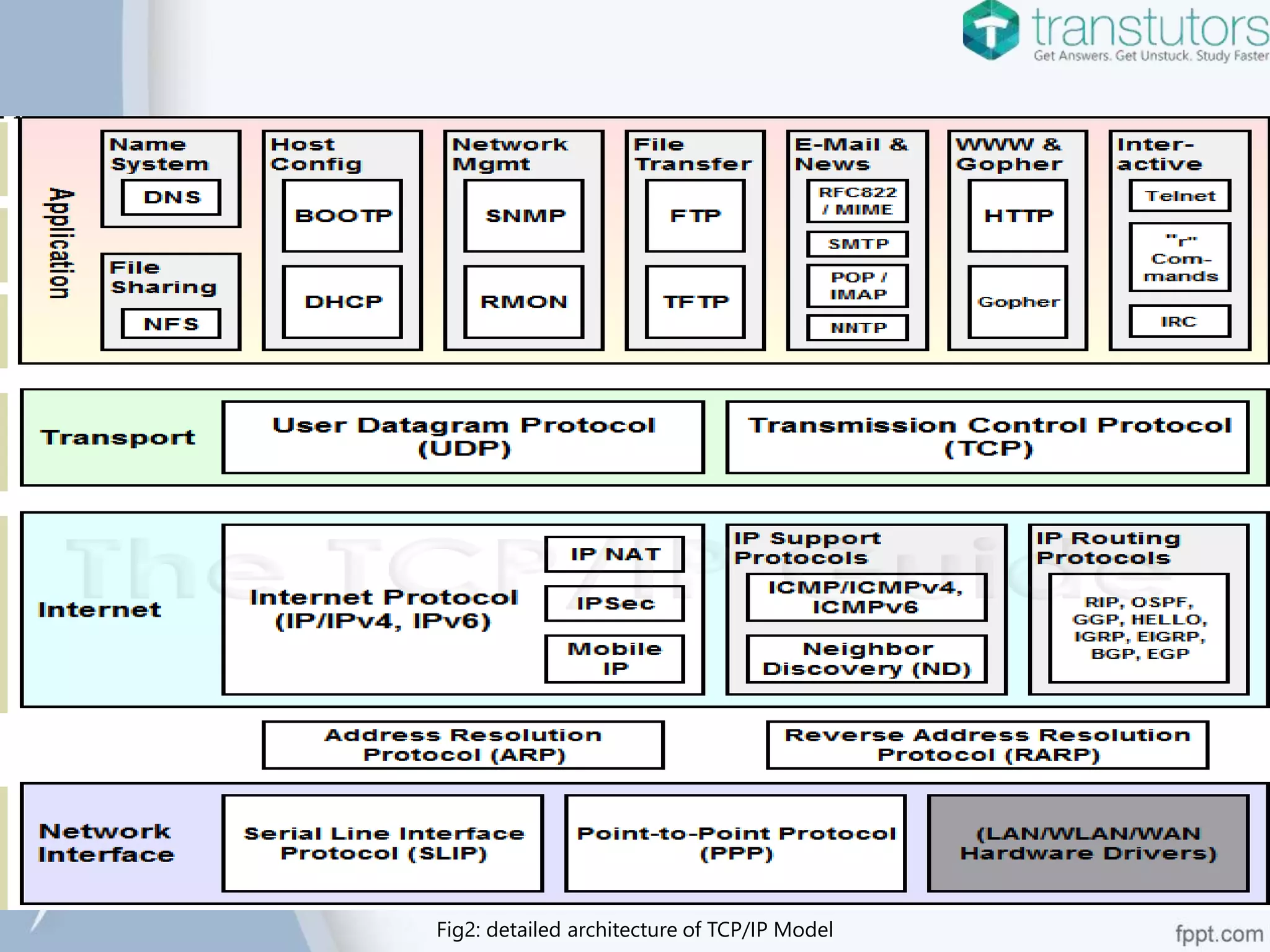
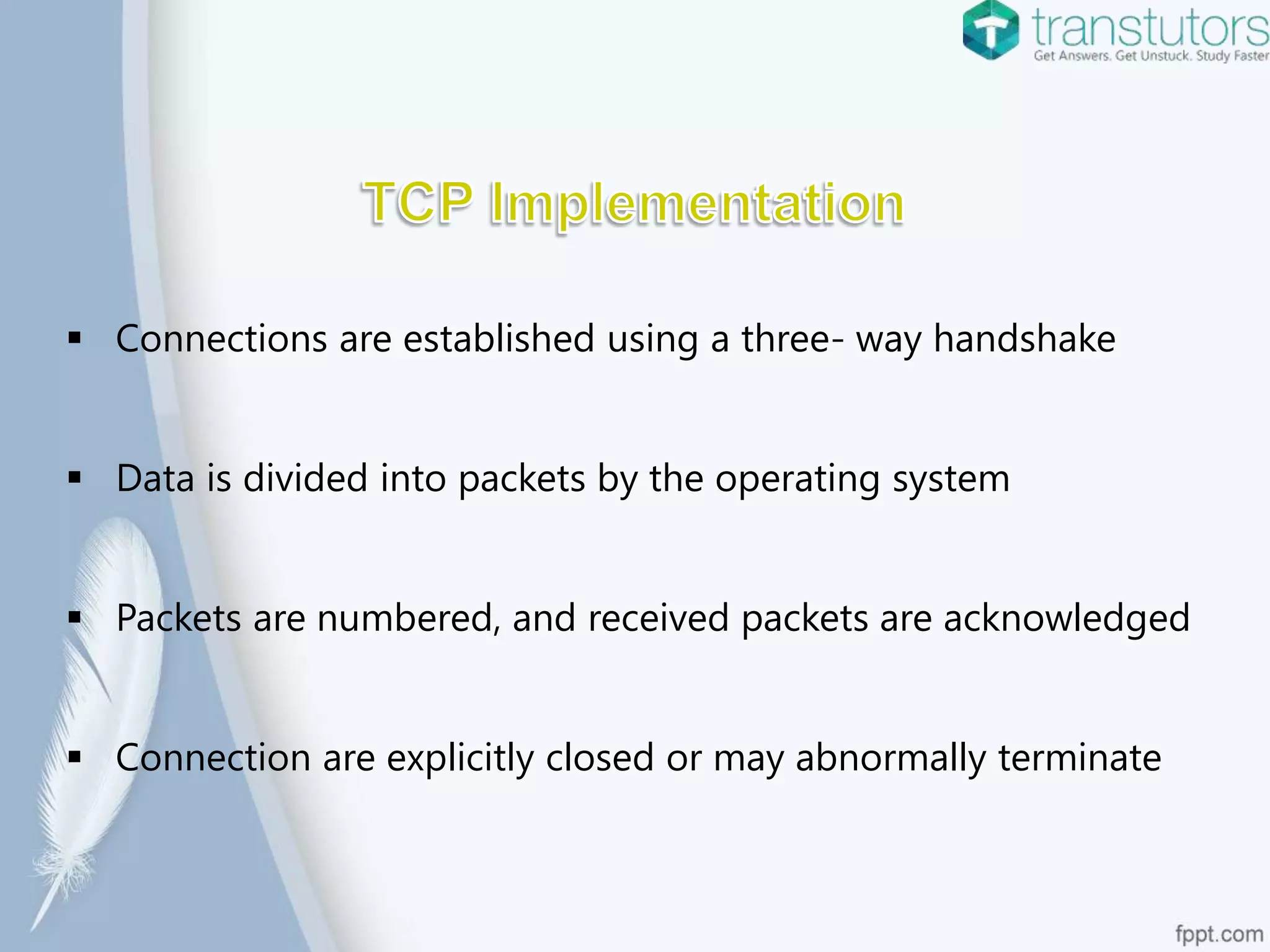
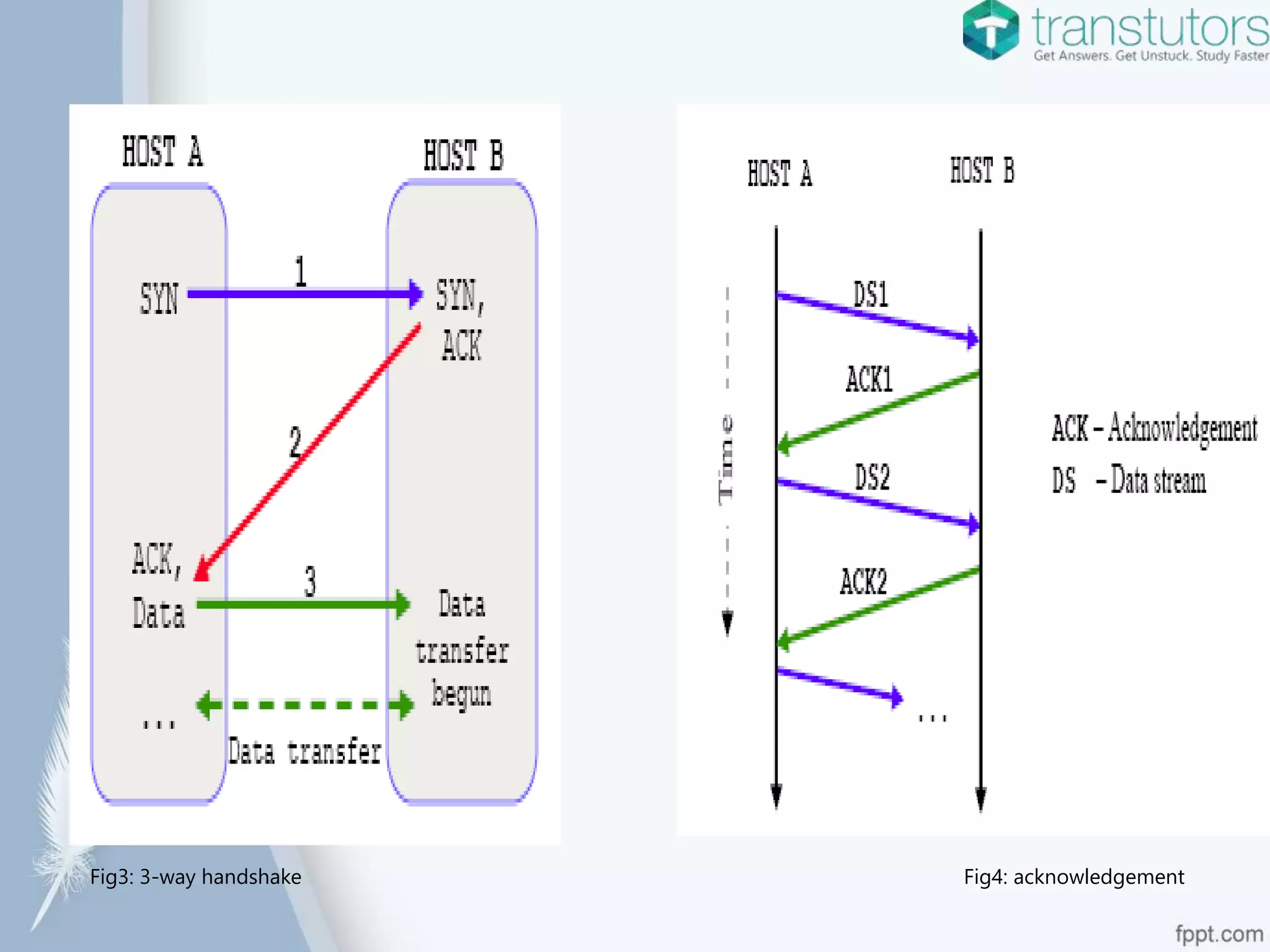
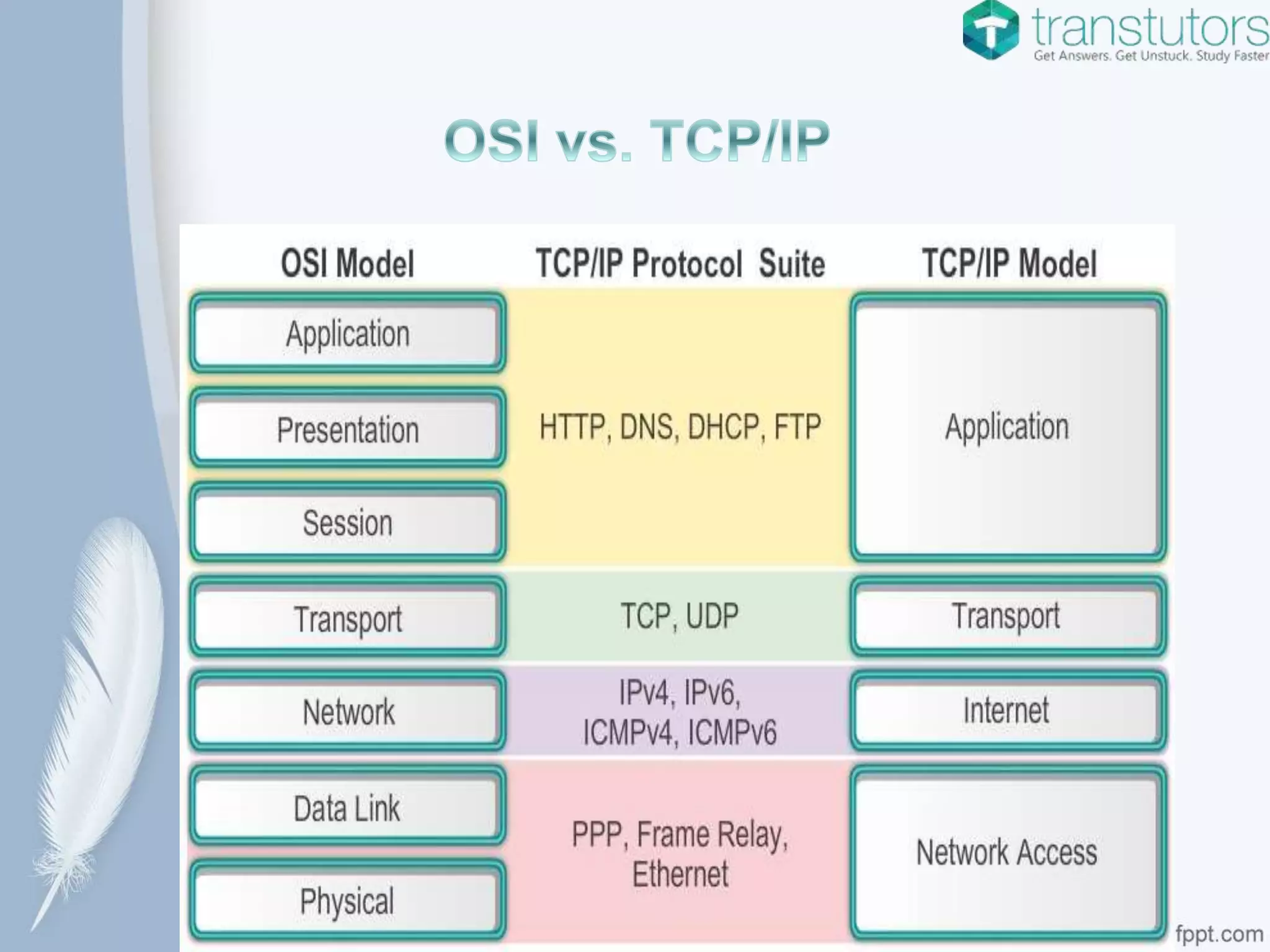
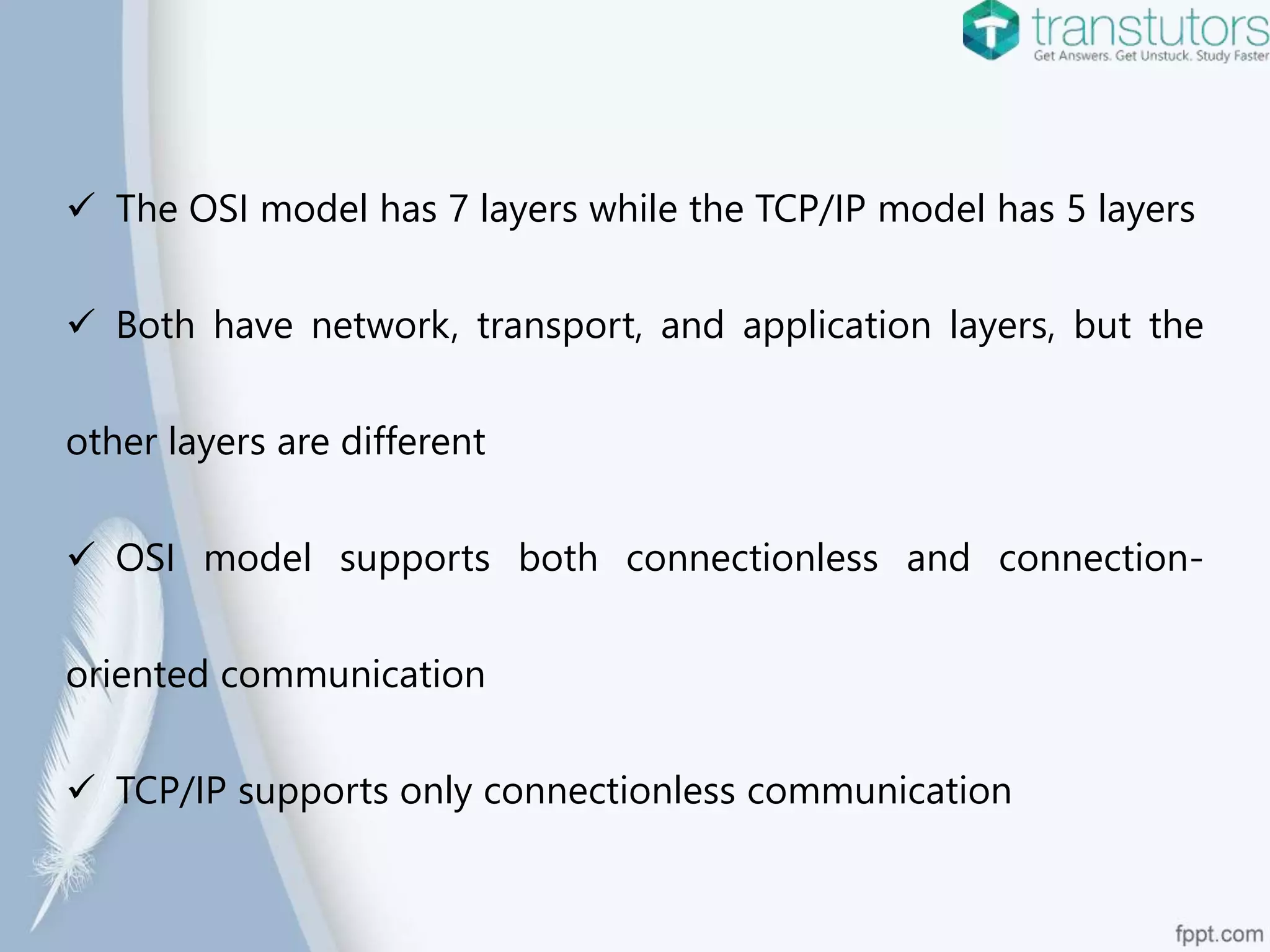
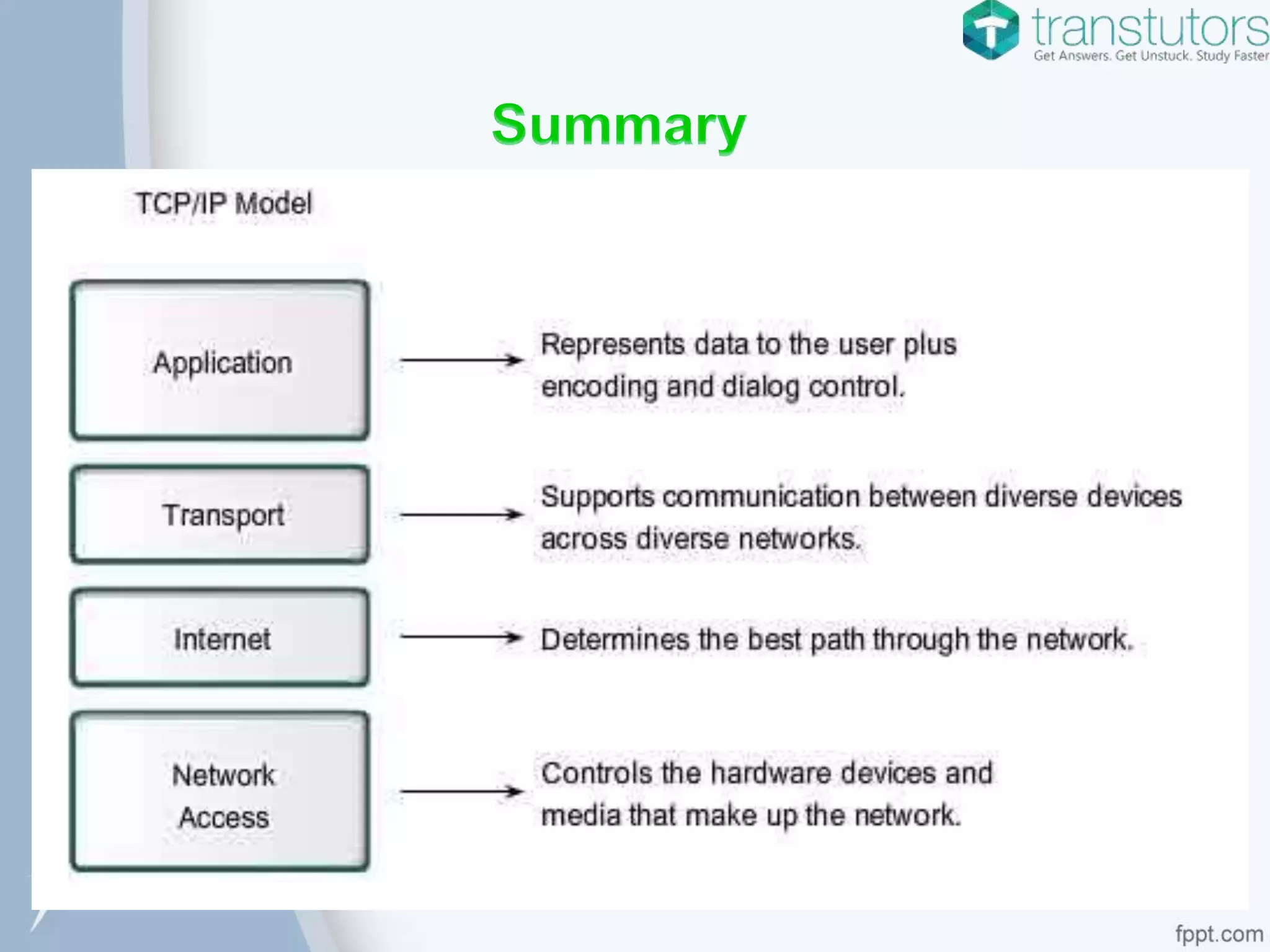
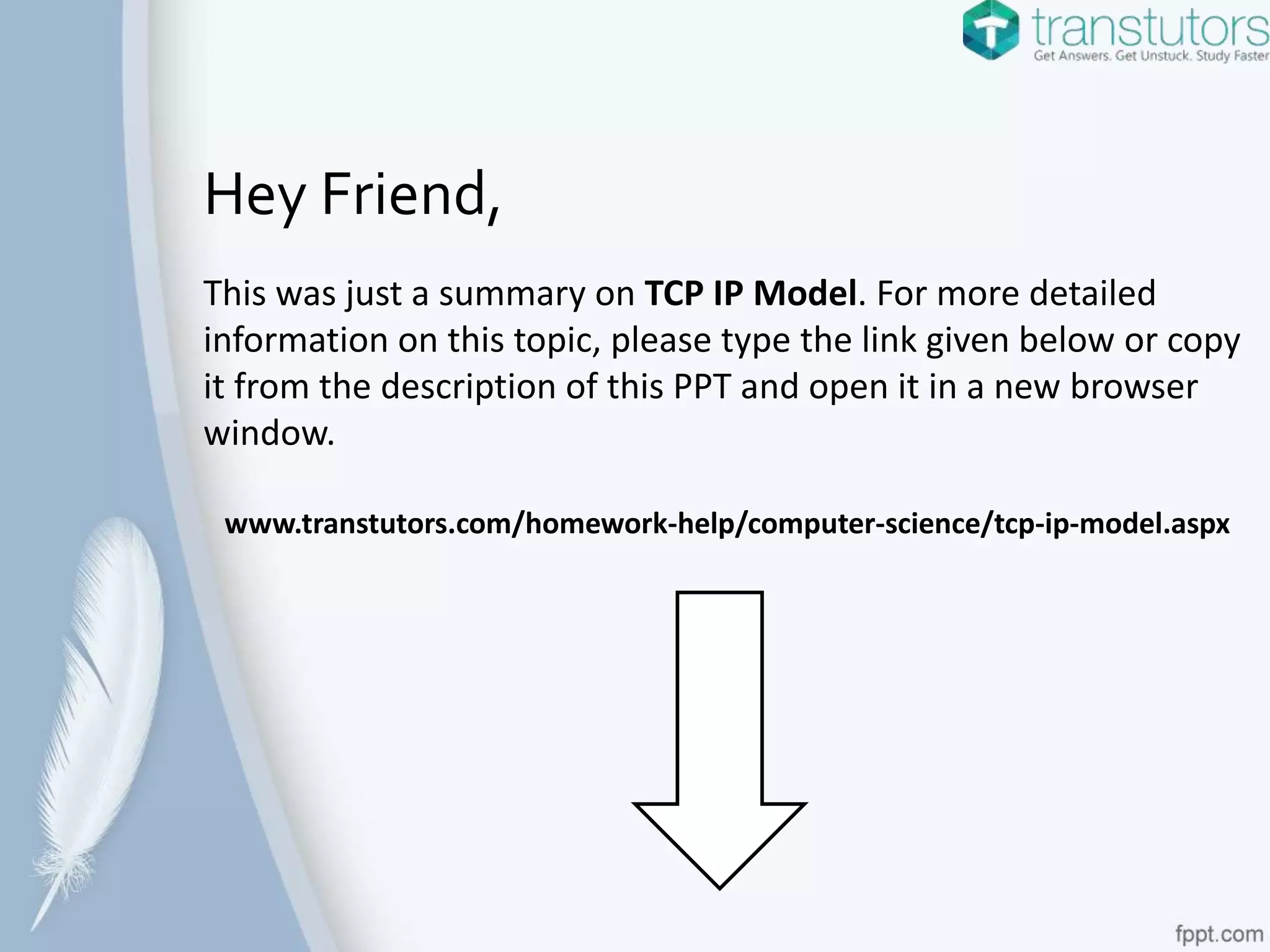

The TCP/IP model is a set of communication protocols used for the internet, named after its primary protocols: Transmission Control Protocol (TCP) and Internet Protocol (IP). It consists of five layers, with the application layer at the top, responsible for data coding, and the transport layer managing packet transportation. Unlike the OSI model, which has seven layers and supports both connectionless and connection-oriented communication, the TCP/IP model supports only connectionless communication.










